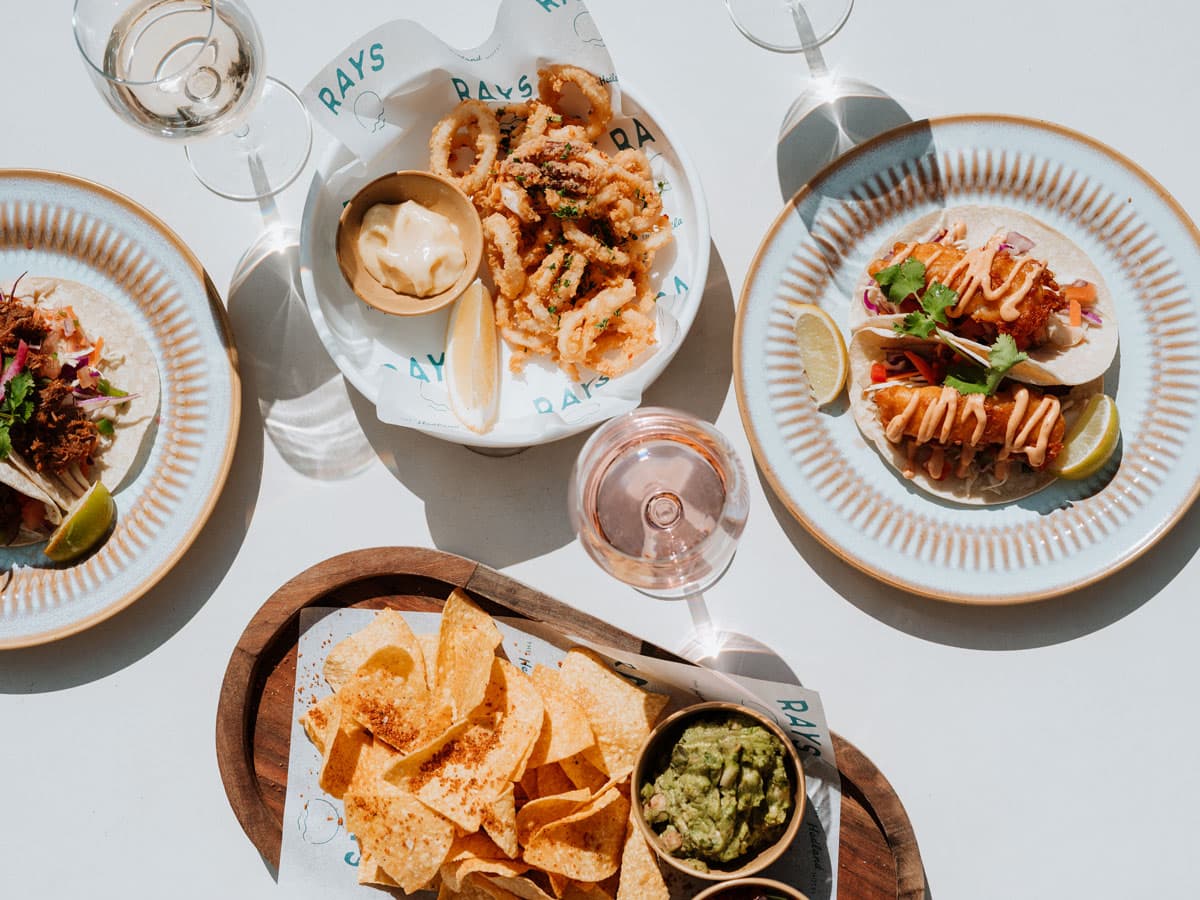31 July 2024
![]() 6 mins Read
6 mins Read

A rich spill of golden sunlight pours over the beach, known to locals as Turtle Bay. Bowing palms and frangipani trees whisper in the breeze, and the departing sun glows an incandescent blood red, mirroring the cracked crimson earth below.
It’s an intoxicating scene: one you might expect to find in coveted tropical havens such as Broome or Far North Queensland. But this radiant stretch of coastline hems the bustling mining town of Port Hedland in Western Australia’s northern Pilbara region – a place known for its colossal iron ore ships and cargo trains snaking through the desert.
Amid the clamour of industry in this rough-and-tumble frontier town, surprising pockets of tranquillity abound. In recent years, hospitality and tourism operators have harnessed the region’s yin and yang beauty, with ramshackle old pubs being renovated, a new world-class marina unveiled, cycle paths laid out along the coast and a smattering of bars and restaurants sprouting up across town.

Soak up one of the Pilbara’s spectacular sunsets. (Image: Greg Snell/Tourism Western Australia)
The most notable opening is Rays, a lush Palm Springs-inspired bar and restaurant clasping the Indian Ocean.

Take in views of the Indian Ocean from the verandah.
This multimillion-dollar redevelopment by the Prendiville Group is part of the Hedland Hotel, a revitalised 1960s-era motel offering sophisticated coastal accommodation just two kilometres from the town centre.

Stay at The Hedland Hotel.
I sit on the patio sipping on a negroni, joined by a throng of locals and holidaymakers gathering to soak up that golden afternoon light. The scene recalls the work of iconic photographer Slim Aarons, who captured the opulence of Palm Springs in the ’60s. Rows of white breezeblocks dissect the sprawling al fresco dining area, where high tables are crowned with bright yellow and orange umbrellas.

Rays is a Palm Springs-inspired restaurant at Port Hedland.
The crowd is a mixture of mining execs, blokes in high-vis gear, local cool kids and expat families who’ve come here from across the world to get a slice of the good life.

Rays is part of the Hedland Hotel.
While the clientele might not be quite as chic as those in Aarons’ glamorous portraits, Rays has clearly become the go-to hangout in town. This is owing not only to its sumptuous setting but the high calibre of its food and wine, overseen by Prendiville Group’s director of food and veteran Perth chef Russell Blaikie, alongside executive chef Mitch Mezciems.

The menu is filled with So-Cal flavours.
The menu has a distinctly Southern Californian flavour while showcasing top-notch Western Australian produce. The popular seafood tower, which feels almost as tall as the town’s giant dockside cranes, is piled high with Exmouth prawns and oysters, king crab, Abrolhos Island scallops and Western rock lobster, among other delicacies.
An enormous range of dishes fly out of the kitchen, from a tender 700-gram rib-eye on the bone to tasty fish tacos and woodfired pizzas, whipped up by Italian chef Giosue ‘Joe’ Pinto at the onsite pizzeria – which, Russell says, features “the Rolls Royce of pizza ovens”. The drinks are going down a treat too, with guests savouring colourful cocktails (try the zesty Palm Springs) and a decent selection of wines, drawn from the most extensive list in town.

Italian chef Giosue ‘Joe’ Pinto makes dough for diners at Pizza at Rays.
If you bring the right gear (aka closed-in shoes), you can walk out over Turtle Bay’s fringing reef at low tide. I wasn’t prepared for the assignment but watched on gleefully as a family next to us returned with videos of an octopus squirming over the reef. The bay is also an important nesting ground for flatback sea turtles, and if you visit between October and March, you might be lucky enough to witness their young being hatched.

The desert meets turquoise sea. (Image: Tourism Western Australia)
The next morning, we hit the road to discover another of the Pilbara’s new hospitality gems. On the 2.5-hour drive west towards Karratha, a swirl of brown, pink and red splashes across the earth like a Jackson Pollock painting. It’s a stifling hot afternoon and arriving at the Karratha International Hotel is truly like stumbling upon an oasis in the desert.

Explore the remote Pilbara. (Image: Sean Scott/Tourism Western Australia)
Local families are relaxing by the hotel pool fringed by palm trees. Parents are reading contentedly on sun loungers while their kids run amok and a lovely breeze wafts through the space. “We’re very invested in creating offerings that appeal to our communities first and foremost,” says hotel manager Paul Gray, who invites locals to come and use the facilities among paying guests.

Cool off in the hotel pool.
The venue also attracts the many road-trippers who stop through Karratha while touring the region’s natural spoils. And after tasting the food that’s on offer at its Italian restaurant Luce Bar e Cibo, I can see why. Helmed by executive chef Nazim Khan, the kitchen pumps out exquisitely prepared classics such as house-made gnocchi with veal osso buco and juicy gamberi (prawns) grilled on a bed of scampi butter. Washed down with a limoncello spritz, so good I ordered a second, it’s a truly memorable Mediterranean feast.

Dine by the poolside at the Italian restaurant Luce Bar e Cibo.
Emerging out of the restaurant into its soaring pagoda, where locals and guests are resting from the mid-afternoon heat, I’m beginning to see the appeal of this stretch of dry country where the desert meets the sea. It’s not only rich in resources, but in flavours and cultures, and people from all walks of life who come here to start anew. Salute to that.
LEAVE YOUR COMMENT